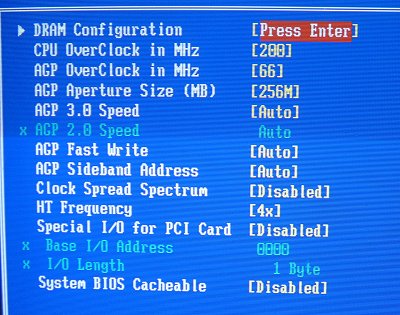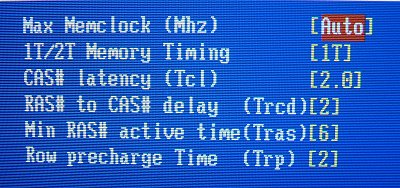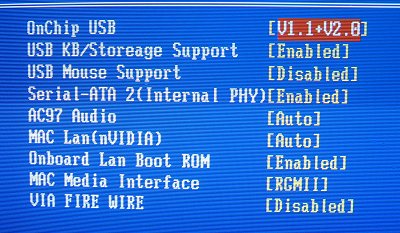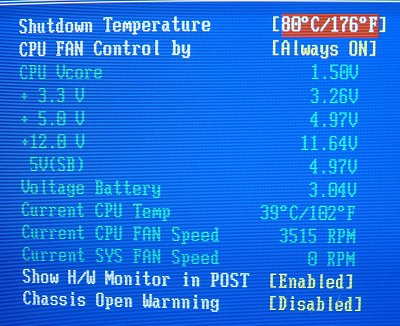BIOS
BIOSTAR continues to use a standard Phoenix AwardBIOS setup utility. It's easy to navigate and simple to use.
Voltage and clock manipulation, unusually, are located in different sections. The CPU's driven clock can be adjusted from the default 200MHz through to 250MHz in 1MHz increments. That's fine if accompanied by an option to toggle multipliers. BIOSTAR has neglected to include it in this BIOS, so overclocking results from increases in driven clock alone. That also puts a significant dampener on air-cooled overclocked. Athlon 64 CPUs tend not to run much past 10% above basic clock speed. The AGP bus can be overclocked from anywhere between 66-100MHz.

I wonder why voltages were left to a 2-line subscreen. CPU voltage increases are expressed in percentage terms, and the options range from 1.7%, 3.4%, to 5.1%. Given a basic operating frequency of 1.5v, the upper limit translates to 1.5765v. DDR voltage has a broader range, though, with 2.9v a generous level for what amounts to an OEM-style motherboard.

Memory frequencies are represented as a fraction of overall clock speed. BIOSTAR offers the options of a maximum memory clock of 100MHz, 133MHz, 166MHz and 200MHz, respectively. I chose to run with DDR400 frequencies (200MHz) along with low latencies, as shown above. Note that S754 CPUs use a single-channel memory setup. Extra performance is to be found with AMD's S939 dual-channel architecture.

Features, whilst not in the league of ASUS and MSI's super-deluxe boards, are nonetheless more than adequate for a board firmly entrenched in the budget sector. Only the absence of discrete RAID is noticeable.

DDR voltages are absent from the voltage-reporting section. All voltage rails were pretty steady under moderate BIOS load, and the K8NHA Grand was a paradigm of stability during testing at default speed and tight memory timings. If it's a rock-solid, cheap motherboard that you're after to pair up with a tasty S754 CPU, BIOSTAR's is certainly in the running. Let's take a look at performance.









